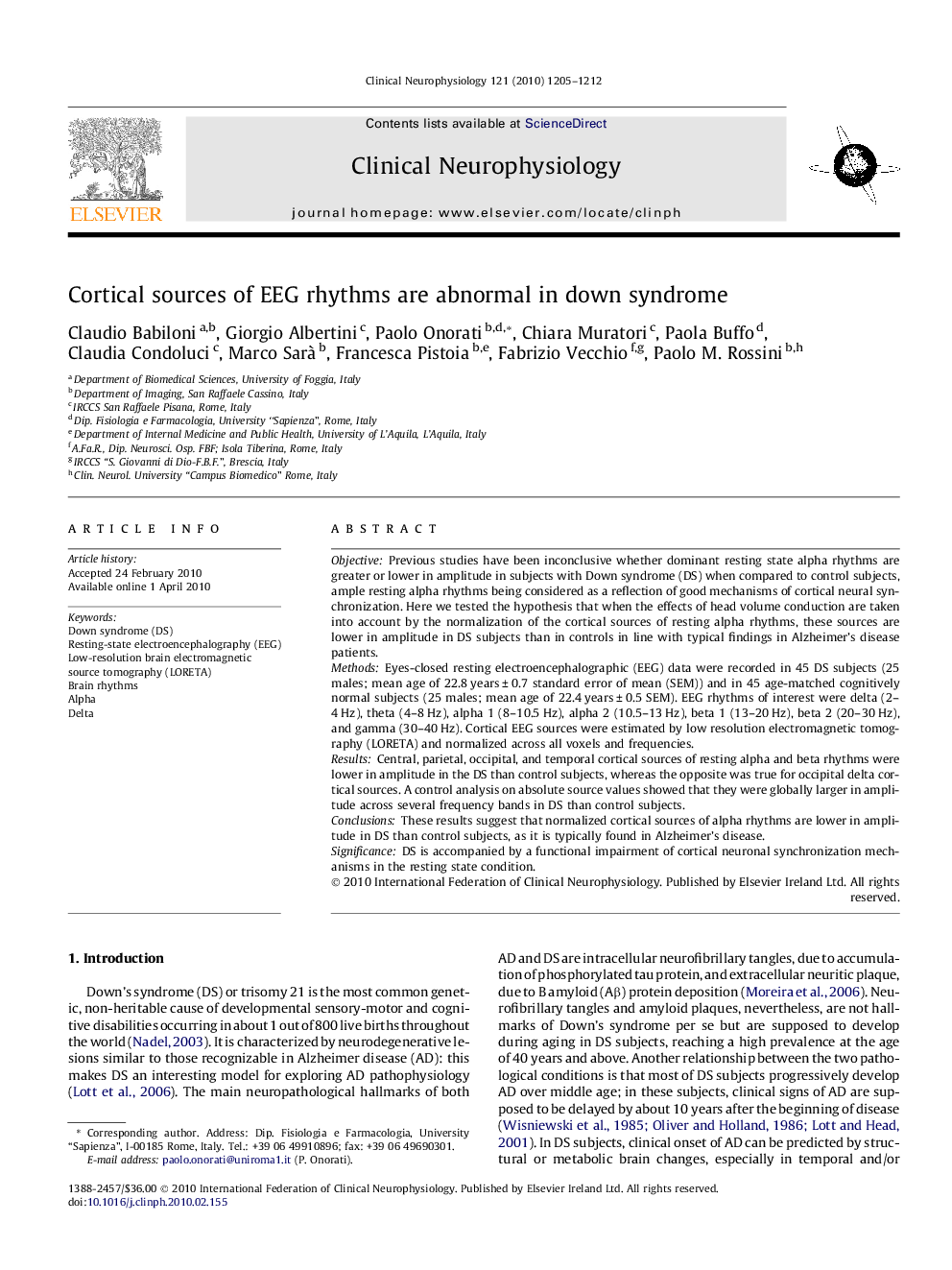| کد مقاله | کد نشریه | سال انتشار | مقاله انگلیسی | نسخه تمام متن |
|---|---|---|---|---|
| 3044841 | 1185010 | 2010 | 8 صفحه PDF | دانلود رایگان |

ObjectivePrevious studies have been inconclusive whether dominant resting state alpha rhythms are greater or lower in amplitude in subjects with Down syndrome (DS) when compared to control subjects, ample resting alpha rhythms being considered as a reflection of good mechanisms of cortical neural synchronization. Here we tested the hypothesis that when the effects of head volume conduction are taken into account by the normalization of the cortical sources of resting alpha rhythms, these sources are lower in amplitude in DS subjects than in controls in line with typical findings in Alzheimer’s disease patients.MethodsEyes-closed resting electroencephalographic (EEG) data were recorded in 45 DS subjects (25 males; mean age of 22.8 years ± 0.7 standard error of mean (SEM)) and in 45 age-matched cognitively normal subjects (25 males; mean age of 22.4 years ± 0.5 SEM). EEG rhythms of interest were delta (2–4 Hz), theta (4–8 Hz), alpha 1 (8–10.5 Hz), alpha 2 (10.5–13 Hz), beta 1 (13–20 Hz), beta 2 (20–30 Hz), and gamma (30–40 Hz). Cortical EEG sources were estimated by low resolution electromagnetic tomography (LORETA) and normalized across all voxels and frequencies.ResultsCentral, parietal, occipital, and temporal cortical sources of resting alpha and beta rhythms were lower in amplitude in the DS than control subjects, whereas the opposite was true for occipital delta cortical sources. A control analysis on absolute source values showed that they were globally larger in amplitude across several frequency bands in DS than control subjects.ConclusionsThese results suggest that normalized cortical sources of alpha rhythms are lower in amplitude in DS than control subjects, as it is typically found in Alzheimer’s disease.SignificanceDS is accompanied by a functional impairment of cortical neuronal synchronization mechanisms in the resting state condition.
Journal: Clinical Neurophysiology - Volume 121, Issue 8, August 2010, Pages 1205–1212